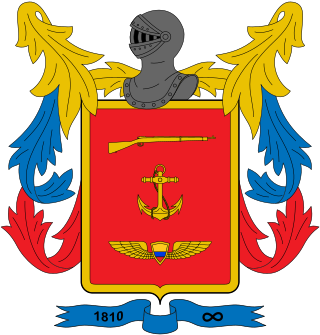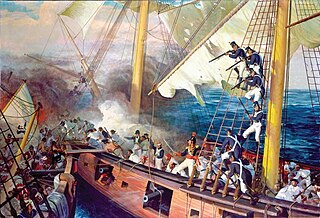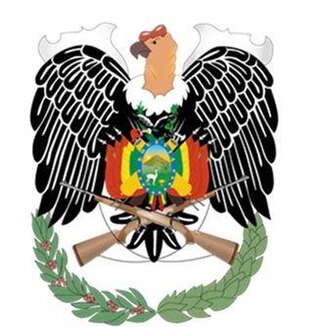Modern Rurales
The number of Rural Defence Force (Rural Police Force) enlistments was 120,000 (80,000 mounted and 40,000 dismounted) [1] in 1970 but was being phased out in the 1990s. The IISS's The Military Balance listed the corps as having only 14,000 members in 1996. The volunteers, aged eighteen to fifty, enlist for a three-year period. Members do not wear uniforms or receive pay for their service but are eligible for limited benefits. They are armed with outmoded rifles, such as the Mosquetón Mod. 1954, which may be the main inducement to enlist. Rudimentary training is provided by troops assigned to military zone detachments.
The basic unit is the pelotón of eleven members under immediate control of the ejido. Use of the unit outside the ejidos is by order of the military zone commander. One asset of the corps is the capacity of its members to gather intelligence about activities within the ejidos and in remote rural areas seldom patrolled by military zone detachments. Corps members also act as guides for military patrols, participate in civic-action projects, and assist in destroying marijuana crops and preventing the transport of narcotics through their areas.
Currently Rural Defence Force members are being utilized in the Mexican War on Drugs. This is the case in the State of Michoacán, where the Government has attempted to restrict civilian vigilantism (such as the creation of unregulated armed security groups) by deploying rurales against local drug cartels. [2] [3]

The Military Forces of Colombia are the unified armed forces of the Republic of Colombia. They consist of the Colombian Army, the Colombian Navy and the Colombian Aerospace Force. The National Police of Colombia, although technically not part of the military, is controlled and administered by the Ministry of National Defence, and national conscription also includes service in the National Police, thus making it a de facto gendarmerie and a branch of the military. The President of Colombia is the military's commander in chief, and helps formulate defense policy through the Ministry of National Defence, which is in charge of day-to-day operations.

The Armed Forces of the Dominican Republic are the military forces of the Dominican Republic. They consist of approximately 56,000 active duty personnel. The president is the commander in chief of the Armed Forces of the Dominican Republic and the Ministry of Defense is the chief managing body of the armed forces. The primary missions of the Armed Forces of the Dominican Republic are to defend the nation and protect the territorial integrity of the country. The Armed Forces of Dominican Republic are the strongest army in the Caribbean after Cuba.

A militia is generally an army or some other fighting organization of non-professional or part-time soldiers; citizens of a country, or subjects of a state, who may perform military service during a time of need, as opposed to a professional force of regular, full-time military personnel; or, historically, to members of a warrior-nobility class. When acting independently, militias are generally unable to hold ground against regular forces; militias commonly support regular troops by skirmishing, holding fortifications, or conducting irregular warfare, instead of undertaking offensive campaigns by themselves. Local civilian laws often limit militias to serve only in their home region, and to serve only for a limited time; this further reduces their use in long military campaigns. Militias may also, however, serve as a pool of available manpower for regular forces to draw from, particularly in emergencies.

The Cuban Revolutionary Armed Forces are the military forces of Cuba. They include Revolutionary Army, Revolutionary Navy, Revolutionary Air and Air Defense Force, and other paramilitary bodies including the Territorial Troops Militia, Youth Labor Army, and the Defense and Production Brigades, plus the Civil Defense Organization and the National Reserves Institution. All these groups are subordinated to the Ministry of the Revolutionary Armed Forces.

Lázaro Cárdenas del Río was a Mexican army officer and politician who served as president of Mexico from 1934 to 1940. Previously, he served as a general in the Constitutional Army during the Mexican Revolution and as Governor of Michoacán and President of the Institutional Revolutionary Party. He later served as the Secretary of National Defence. During his presidency, which is considered the end of the Maximato, he implemented massive land reform programs, led the expropriation of the country's oil industry, and implemented many left-leaning reforms.

Military police (MP) are law enforcement agencies connected with, or part of, the military of a state. In wartime operations, the military police may support the main fighting force with force protection, convoy security, screening, rear reconnaissance, logistic traffic management, counterinsurgency, and detainee handling.

The Civil Guard is one of the two national law enforcement agencies of Spain. As a national gendarmerie force, it is military in nature and is responsible for civil policing under the authority of both the Ministry of the Interior and the Ministry of Defence. The role of the Ministry of Defence is limited except in times of war when the Ministry has exclusive authority. The corps is colloquially known as the benemérita. In annual surveys, it generally ranks as the national institution most valued by Spaniards, closely followed by other law enforcement agencies and the armed forces.

For the modern Rurales of Mexico see: Cuerpo de Defensa Rural and For other Rurales types forces see: Rurales (disambiguation)

Marines are soldiers who primarily operate in littoral zones, both on land and at sea. Historically, the main tasks undertaken by marines have included raiding ashore in support of naval objectives, and the boarding of vessels during combat or capture of prize ships. Marines also help maintain discipline and order aboard the ship. In most countries, marines are an integral part of that state's navy.

The Mexican Army is the combined land and air branch and is the largest part of the Mexican Armed Forces; it is also known as the National Defense Army.

Before the 1910 Mexican Revolution, most land in post-independence Mexico was owned by wealthy Mexicans and foreigners, with small holders and indigenous communities possessing little productive land. During the colonial era, the Spanish crown protected holdings of indigenous communities that were mostly engaged in subsistence agriculture to countervail the encomienda and repartimiento systems. In the 19th century, Mexican elites consolidated large landed estates (haciendas) in many parts of the country while small holders, many of whom were mixed-race mestizos, engaged with the commercial economy.

Law enforcement in Bolivia is reliant on the 40,000-member Cuerpo de Policía Nacional responsible for internal security and maintaining law and order. Unlike many South American countries, the Bolivian police force always has been accountable to the national government rather than to state or local officials. The 1950 Organic Law of Police and Carabiniers officially separated the police from the military. Frequently, however, the national police call upon the military for assistance in quelling riots and civil protests.

The Ministry of Defence is the government ministry responsible for safeguarding national security on land, sea and air. It exercises command over the Peruvian Armed Forces composed of the Army, the Navy and the Air Force. As of 13 February 2024, the minister of defense is Walter Astudillo.

The Chilean Marine Corps is an entity of the Chilean Navy special forces which specializes in amphibious assaults.

The Mexican Armed Forces are the military forces of the United Mexican States. The Spanish crown established a standing military in colonial Mexico in the eighteenth century. After Mexican independence in 1821, the military played an important political role, with army generals serving as heads of state. Following the collapse of the Federal Army during the 1910–1920 Mexican Revolution, former revolutionary generals systematically downsized the size and power of the military.
First sergeant is typically a senior non-commissioned officer rank, used in many countries.

The Chief of the Defence Staff is the highest-ranking military officer in the Spanish Armed Forces and is the principal military advisor to the Prime Minister, the Minister of Defence, the National Defence Council and the National Security Council. It is the fourth military authority of the country after the Monarch, the Prime Minister and the Minister of Defence because the Secretary of State for Defence and the Under-Secretary of Defence do not have military authority.

José Manuel Mireles Valverde was a Mexican medical doctor, leader and founder of the paramilitary self-defense groups that fought against the Knights Templar Cartel, and other cartels, during the on-going cartel wars in the state of Michoacán and others, in México. Amid the inability of the Mexican government to protect its citizens, Mireles emerged as an important figure within the self-defense militias during the fall of 2013 as self-defense groups were fighting against the Knights Templar Cartel in Apatzingán and other municipalities on the Michoacán coast. He described his motivation to participate in the armed self-defense groups as stemming from the abuse of the Knights Templar Cartel against himself and his family, himself having been kidnapped by the cartel and several of his family members murdered. This impelled him to take up arms in defense of his community of Tepalcatepec.

Grupos de autodefensas or Policía Comunitaria or Policía Popular are vigilante self-defense groups that arose in the Gulf of Mexico and South Mexico regions between 2012 and 2013. The Mexican government has attempted to monitor and absorb these groups into the federal government to act as Rural Police in order to avoid clashes between the paramilitaries and the Mexican Armed Forces itself.

The Defence Staff, based in Madrid, is an organ of the Ministry of Defence that operates as an auxiliary to the Chief of the Defense Staff (JEMAD) within the organic structure of the Spanish Armed Forces and in a military hierarchical position of dependence on the former.


















